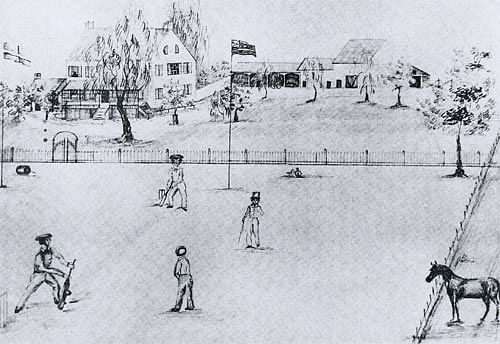
The story of how Cricket World Cup came into existence
The 2015 Cricket World Cup hosted by Australia and New Zealand will be the eleventh edition of the tournament.
While much has been documented on how the sport’s premier tournament has evolved over the years after the first edition of the ICC Cricket World Cup, in 1975, in this piece we try to trace the origins of the tournament that go back to the mid-19th century, when the first international match was played, and how cricket progressed from being an amateur game to one of the most watched sports worldwide.
First International Match
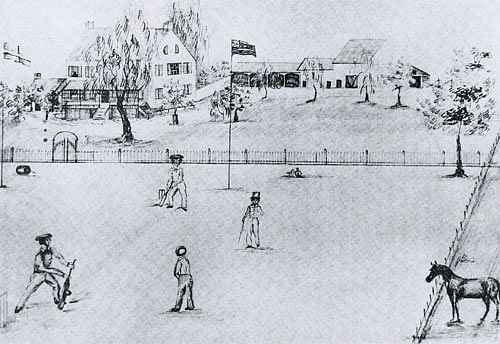
Interestingly, the oldest international rivalry in cricket isn’t between England and Australia as many would believe; in fact, it involves United States of America and Canada - two sides who have never ever been given Test status in the sport.
Canada (then referred to as British Empire’s Canadian Province) travelled to the USA in September 1844 to play a match against the hosts St George’s Club Ground, Bloomingdale Park, New York, which is recorded as the first match in which an international side travelled to another country to play a match involving two teams that represent their respective countries.
The game could have actually taken place in 1840, i.e., four years before. The St George’s Club were given an invite to play a match against the Toronto Cricket Club. A squad of 18 players from New York arrived in Toronto in August 1840, only to find that the invite was a hoax and the Toronto Club had no prior knowledge of the invite. However, the Toronto side, being gracious hosts, managed to make quick arrangements for a match, which was well attended and ultimately won by the visitors
The hastily arranged match, which ensured that the trip made by the Americans didn’t go waste, helped establish a good relationship between the St George’s Club and Toronto Club, and in 1844, there was a genuine invite sent by the New York side to the Canadian club, which was accepted.
Instead of making it a club game, two sides that were representatives of USA and Canada were formed, with players from clubs other than St George’s and Toronto included and the match was promoted as USA v Canada.
The match was scheduled to be for a duration of two days, but with the second day getting washed out, which led to the game being extended to a third day. On 24 September, USA won the toss and asked the Canadians to bat first. The visitors scored 82, to which the hosts replied with 64. In the second innings, Canada scored 63 and dismissed the Americans for 58 to seal a 24-run victory.
USA and Canada faced off in matches in the following years. For a while the sport was very popular in the USA, before the civil war led to its decline in the country.
First Official Test Match
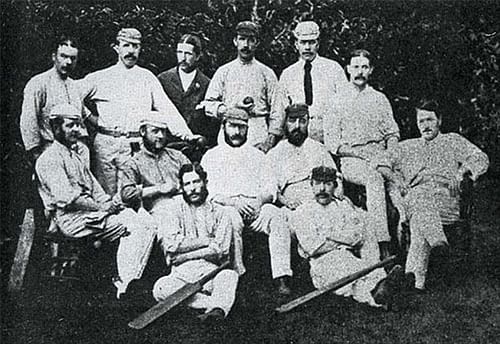
The matches between USA and Canada led to foreign tours being made by the English (who toured North America in 1859 and Australia in 1862) and Australia (who toured England in 1868 and played against county teams).
In 1877, the English team toured Australia and played two matches against a combined Australian XI, which are now recognized as the inaugural Test matches. The two sides were recognized as representative teams of the countries, and the touring England squad comprised of only professionals.
The two Test matches were played as timeless games, and the first Test started on 15 March 1877 at Melbourne. Australia, winning the toss, chose to bat first and Charles Bannerman had the distinction of being the scorer of the first run and first century in Test cricket (he also became the first batsman to retire hurt in Tests when he did so in the first innings). The hosts won the Test by 45 runs, but the visiting English side managed to win the second Test to tie the series 1-1.
Cricket at the Olympics
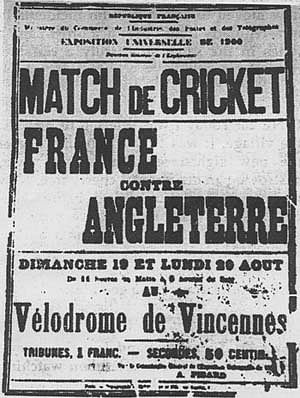
Cricket was intended to be included among the sports for the inaugural modern Olympics – the 1896 Athens Olympics, but it was shelved after a lack of entries. The second edition of the Olympics, Paris in 1900, was supposed to have 4 participants – hosts France, Great Britain, Belgium, and Netherlands. However, once Belgium and Netherlands saw their attempts to co-host the event along with France falter, they withdrew their participation from cricket.
And hence with only two teams involved, the 1900 Olympics had only one cricket match played, which was between Great Britain and France. Prior to the match, the two captains agreed to change the contest to twelve-a-side instead of the usual norm of eleven players in a team.
The Great Britain side wasn't picked from the country's entire talent pool, but was only represented by players from Devon and Somerset Wanderers. The French team had almost no Frenchmen and was largely a team of expat Englishmen in Paris.
The British won the 2-day match by 158 runs and were given silver medals while the host team was given bronze medals, with both teams also receiving miniature replicas of Eiffel Tower. The match was formally recognized as an Olympic contest by the International Olympic Committee in 1912, and the medals awarded to Great Britain and France were upgraded to gold and silver respectively.
Till date, the game remains the only the instance when cricket was played in the Olympics.
First Multilateral Series - The Triangular Tournament
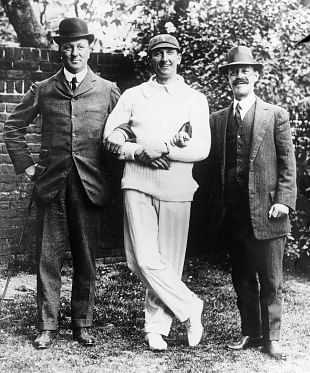
The idea of a competition involving the three Test-playing teams at that time was first proposed in 1909. The newly formed Imperial Cricket Conference (the governing body which later evolved to become the modern-day International Cricket Council) got its three member countries to participate in a tournament in 1912 in which each side played the other thrice, and thus the first ever multilateral international cricket tournament was held.
The 3-day Test matches were played in England between May and August 1912. South Africa were the weakest team out of the three, and that showed in their performance as they failed to win any game, losing 5 out of the 6 games they played.
England and Australia went into the last game of the tournament, and there arose the possibility of a scenario where both sides could finish with the same number of wins. To determine a definite winner, the match was played as a timeless Test, with the 3-day limit removed. England went on to win the match on the fourth day.
The tournament didn’t generate much interest and was ultimately shelved. The next multi-national cricket tournament took place after 63 years – the first ODI Cricket World Cup in 1975, which proved to be more successful and has now grown into a very popular world sporting event.
Limited-overs matches in county cricket
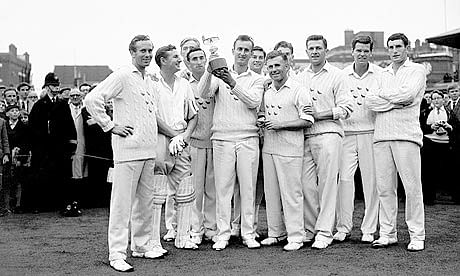
In the early 1960s, the English cricket authorities started exploring the idea of having a knockout tournament with one-day matches, which had one-innings-a-side format. The secretary of Leicestershire, Mike Turner, coordinated a 4-team event named Midlands Knock-Out Cup in 1962, where Leicestershire competed with Derbyshire, Nottinghamshire and Northamptonshire in a knockout tournament, which was termed as “cricket’s FA Cup”. The teams played in matches in which each side was allocated a maximum of 65-overs to bat, and Northamptonshire won the trophy beating Leicestershire in the final.
The MCC adopted the idea in the following year and organised a knockout tournament for all first-class county teams. The tournament was sponsored by American company Gillette and was titled "The First Class Knock-Out Competition for the Gillette Cup".
The tournament has evolved over the years to adapt to the changes in the sport, and while many question whether one-day cricket is given due importance by modern-day English cricketers, it was the idea of an English county secretary that laid down the foundation for ODI cricket and revolutionised the sport.
First One Day International

It took almost a decade after the Midlands Knock-Out Cup for the limited overs format to be tried out on the international stage. And when it happened, it wasn’t planned and ended up being quite low-key.
While Australia had a limited overs tournament in their domestic structure, introduced in 1969-70, the England tour of Australia in 1971 didn’t include any ODIs in the schedule.
The three-Test match series saw dull draws in the first two games, and there were fears that another boring draw could reduce the interest in international cricket. The third Test in Melbourne was disrupted by rains, and the authorities risked severe losses. The proposal to add an additional Test to be played at the MCG at the end of the series was turned down by the English players; the two sides, however, agreed to play a match on the lines of the Gillette Cup on what was to be the fifth day of the match, to give the public something to watch.
ABC’s Alan McGilvray, while during the commentary, quoted: "It's a splendid game. It's different to a Test match or state game, there's more involved. There are more tactical operations, there's more alertness in the field, better running between the wickets. Generally, it's a spectacle that I've enjoyed in England very much."
Tobacco company Rothmans sponsored the game, and just like the first ever Test match, Australia won the first ODI too – this time by 5 wickets at the same ground - MCG. After the game, Don Bradman addressed the crowd and told them that they had seen history being made.
Recollecting the match later, Greg Chappell said, "I think everyone sort of saw one-day cricket as being an add-on and a bit of fun to be had on the side occasionally in a situation like that, basically. But I don't think anyone really had any idea of what might grow out of it."
Women’s cricket
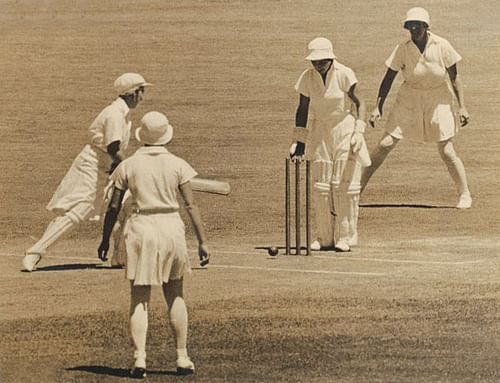
The women cricketers weren’t far behind their male counterparts in the sport, and the first Test match in women’s cricket was played in 1934. Soon after the first ODI was played in 1971, talks, led by Englishman Jack Hayward, of organizing a Women’s Cricket World Cup started. Hayward, who was knighted in 1986 for his charitable actions, had financed the English women’s team tours of West Indies in 1969-70 and 1970-71 and then sponsored the first ever Cricket World Cup for Women in 1973, which was 2 years before the Men’s World Cup.
The 1973 Women’s World Cup saw participation from England, Australia, New Zealand, Jamaica and Trinidad & Tobago along with a “Young England” team and an International XI. The tournament was played in a round-robin format, and England topped the standings to be crowned the World Champions.
Foundations for the 1975 World Cup
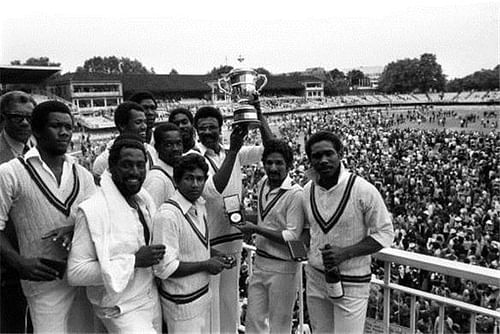
While it is popularly believed that the 1973 Women’s World Cup led to the ICC planning to host the 1975 World Cup, the proposal to conduct such an event was first raised in 1972 in ICC’s annual meeting.
The fact that the South African team was suspended from international cricket because of apartheid and the tension between India and Pakistan after the wars between the two countries led to a delay in the World Cup plans, as there were only 4 other Test playing nations.
Once India and Pakistan agreed to resume playing cricket against each other, the ICC decided to give the go ahead to the event and invited Sri Lanka and East Africa (a team comprising of players from Kenya, Uganda, Zambia and Tanzania) as well to increase the participation numbers.
The tournament was scheduled to be played in England in June 1975, which had previously been earmarked for a tour by South Africa. The ICC was reluctant to call it a ‘World Cup’ fearing that it would give the ODI format, which was still in its infancy stage, too much importance. They tried to call it “International Tournament”, but the newspapers used the term “World Cup” instead, and that name continued since.
Prudential Assurance sponsored the event with an amount of £100,000, and the trophy was officially called the Prudential Cup. England faced off against India at Lord’s in the first ever World Cup game, and the match was attended by almost 20,000 spectators. The public interest increased as the event went on. West Indies skipper Clive Lloyd played a captain’s knock in the final against Australia to lead his side to title glory.
Cricket had found its marquee international event after more than a century of evolution of the sport, and the ICC and the cricketing world realized the potential of the multi-national event – the Cricket World Cup.

Cricket World Cup Winners – An infographic by the team at AsiaBet.org